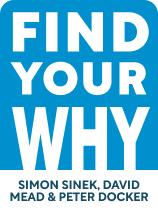

This article is an excerpt from the Shortform book guide to "Find Your Why" by Simon Sinek, David Mead, Peter Docker. Shortform has the world's best summaries and analyses of books you should be reading.
Like this article? Sign up for a free trial here .
What are the simplest ways of understanding your purpose in life? How can understanding your purpose improve your life?
Simon Sinek argues that finding your Why—or purpose—can help you make better choices in your work and your life that lead to greater fulfillment. That’s what he found in his own life after struggling with depression until he identified his purpose: “To inspire people to do what inspires them so that, together, we can change our world for the better.”
Keep reading to learn more about Sinek’s simple exercise for understanding your purpose in life.
Why Should You Understand Your Purpose in Life?
Purpose-driven people and organizations are more successful and fulfilled, and they contribute more to the world around them, according to Simon Sinek, best-selling author, coach, and popular TED Talk speaker. Find Your Why distills Sinek’s theory and his experience working with organizations and individuals into a workbook you can follow to understand your purpose in life and your strengths, or those of your organization.
According to Sinek, understanding your purpose in life means finding the single core belief that inspires you to do the work you choose to do and be the person you want to be in all spheres of your life. He believes every individual and organization has a purpose, though not everyone has discovered theirs or put it into words.
The Purpose Discussion
To determine your Why and come up with a written statement, Sinek and his co-authors created a step-by-step process that individuals and groups can follow in a group discussion or workshop. Sinek’s process for understanding your purpose in life helps you or your team explore past experiences for insight into what moves you.
In this process, you’ll identify important stories in your personal or company experience, share them with a partner or group facilitator, and pull out themes. You’ll then distill these themes to write your Why or purpose statement.
(Shortform note: While Sinek argues that you can find your purpose by looking inward, Viktor Frankl argues the opposite in Man’s Search for Meaning. He contends that you can only find meaning out in the world—in other people or causes—not in your own mind.)
Stage 1: Tell Your Stories
To begin, share the stories you came up with with your partner. While you share, they should do two things:
- Take notes on the main ideas and feelings behind the stories, and capture: 1) the core action you took, and 2) the effect you had or aimed for.
- Highlight recurring words or concepts. Sinek emphasizes that these are the themes you’ll use in the next steps.
| How to Get to the Core of a Story As a partner, how can you determine which ideas and recurring concepts you should make note of? Here are four steps for getting to the core of a story and understanding what it’s really about: 1. Identify the facts of the story. 2. Identify the emotions behind the story through the other person’s words and body language. 3. Ask yourself what the story is really about. Stay silent as you observe what ideas and emotions come up. 4. Once you’ve identified an emotion or idea, share it with them to see if it resonates. If it does, continue asking questions about it to see what else they can uncover. If it doesn’t, repeat the process to explore other possibilities. |
Stage 2: Identify Your Themes
Now, have your partner look through their notes and identify themes. According to the authors, themes are ideas that come up in at least two stories.
Together, read through the list of themes and identify the two you feel a stronger connection to and that convey:
- Your unique participation in the stories—the action you took
- Your effect on others—how they benefited from your participation
Put the other themes aside. You’ll come back to them later when you determine your How.
(Shortform note: Like many people, you might be telling your stories with some responsibility bias, causing you to overemphasize your role and your effect on others. Adam Grant explains in Give and Take that responsibility bias results from ego and from having more information about the actions you’ve taken versus the contributions other people have made. Your partner can help you avoid this bias by asking you about the contributions of other people involved in the stories you’re telling.)
Exercise: Discover Your Personal Purpose
If you don’t have the right partner available, these questions will help you through the process of understanding your life’s purpose on your own.
- Write down one of the stories you previously selected in as much detail as possible. Notice your emotions and physical responses as you write. When you notice an emotion, dig deeper—what is it about the story that’s triggering the emotion?
- Describe the main ideas and feelings in your story, the core action you took in the story, and the effect you had or tried to have. (Repeat this question and the previous one for each of the stories you picked for the process.)
- After you’ve worked through each story, look over your notes, and highlight recurring words or ideas. These are your themes. Identify two that you feel a strong connection to and convey your unique participation in the stories and your effect on others. Write them down.
- Write a statement using the two themes selected in the previous step. First, write the core action your purpose compels you to take. Second, write the ultimate impact you want that action to have. This is your purpose statement. (For example: “To tell necessary stories so that hurt people can heal,” or “To build strong foundations so that future generations can thrive.”)

———End of Preview———
Like what you just read? Read the rest of the world's best book summary and analysis of Simon Sinek, David Mead, Peter Docker's "Find Your Why" at Shortform .
Here's what you'll find in our full Find Your Why summary :
- Simon Sinek’s steps to understanding and living your purpose and your organization’s
- How to create and write your purpose statement
- What to do after you find your Why: Determine your How






